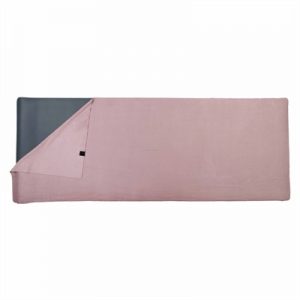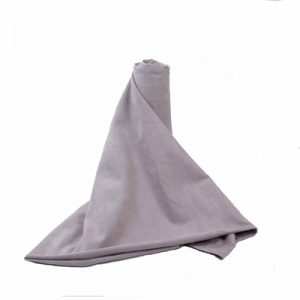Yoga mats come in various designs and materials, each with different features to cater to different needs and preferences. Here are some common features you can find in yoga mats:
- Material: Yoga mats can be made from different materials, such as PVC, TPE, rubber, cork, jute, or natural fibers like cotton. The choice of material affects the mat’s grip, cushioning, durability, and eco-friendliness.
- Thickness: Yoga mats come in various thicknesses, ranging from thin (1/16 inch) to extra-thick (1/4 inch). Thicker mats provide more cushioning for comfort and support, while thinner mats offer better stability and a closer connection to the floor.
- Texture: The texture of a yoga mat influences its grip and feel. Some mats have a smooth surface, while others feature raised patterns, dots, or textures to enhance traction and prevent slipping.
- Grip: A key feature of any yoga mat is its ability to provide a non-slip surface, ensuring stability during various poses, especially in practices involving sweat or humidity.
- Alignment Markers: Some yoga mats have alignment guides or markers printed on them to help practitioners with proper positioning and alignment during their practice.
- Eco-Friendliness: Eco-friendly yoga mats are made from sustainable, biodegradable, or recycled materials, reducing their impact on the environment.
- Portability: Lightweight and portable yoga mats are easy to carry to classes or while traveling, making them convenient for yogis on the go.
- Size: Standard yoga mats are around 68 inches long and 24 inches wide. However, you can find larger or smaller mats to accommodate different body sizes or specific practice needs.
- Color and Design: Yoga mats come in a variety of colors and designs to suit individual tastes and preferences.
- Sweat Resistance: Some mats have moisture-wicking properties, which help prevent the absorption of sweat and maintain a non-slip surface during hot or intense practices.
- Odor Resistance: Certain materials used in yoga mats are designed to resist odors and bacteria, keeping the mat fresh and clean even with frequent use.
- Cushioning: The level of cushioning varies among yoga mats, and choosing the right level depends on personal preference and the style of yoga practiced.
- Durability: A good yoga mat should be durable and able to withstand regular use without wearing out quickly.
- Warranty: Some manufacturers offer warranties on their yoga mats, providing assurance of the product’s quality.
Ultimately, the best yoga mat for you depends on your specific needs, preferences, and the type of yoga you practice. Whether you prioritize grip, comfort, eco-friendliness, or portability, there is a yoga mat out there to suit your requirements.








